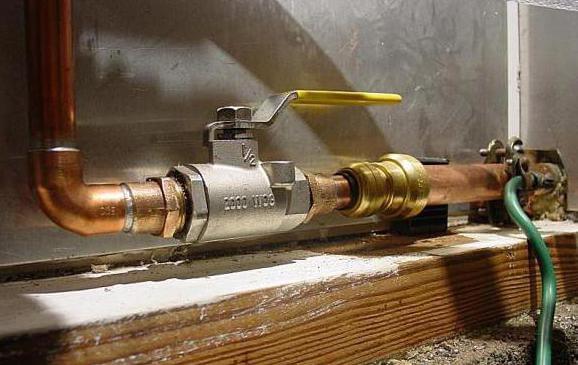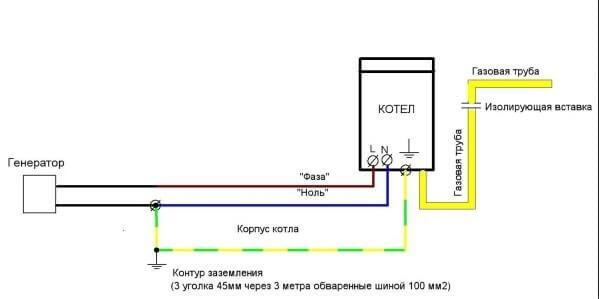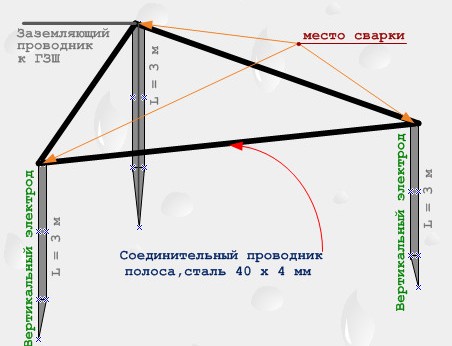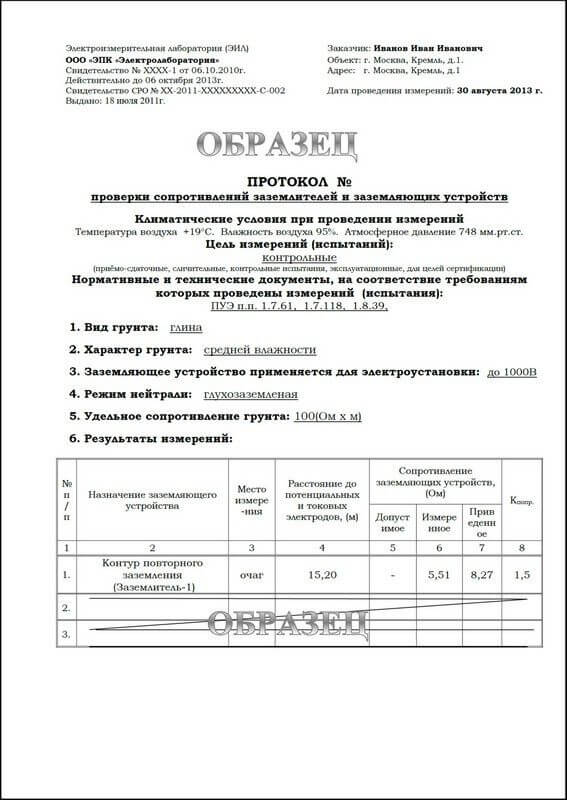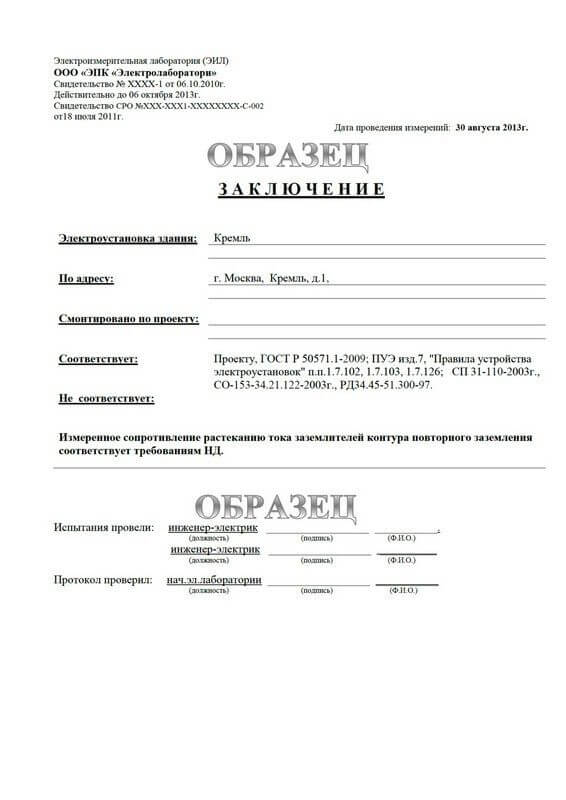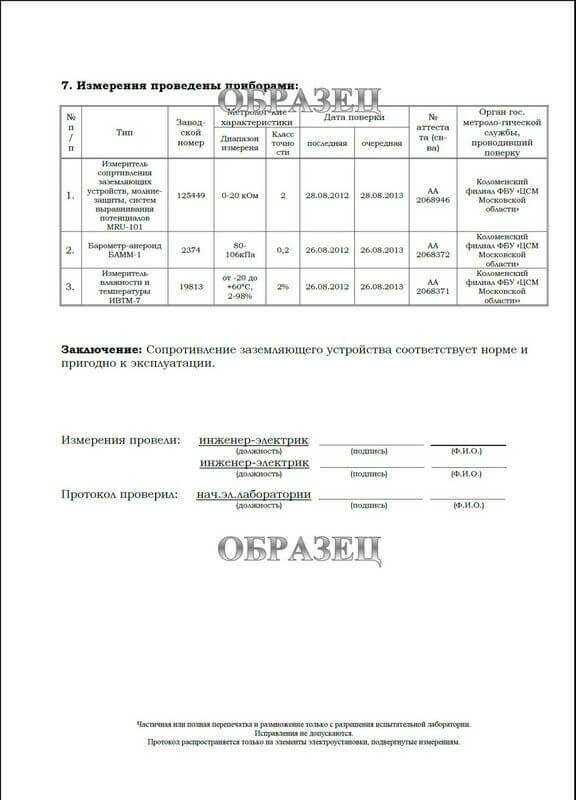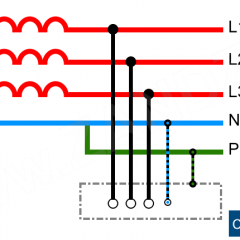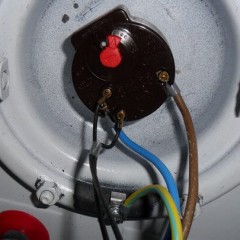How to ground a gas boiler in a private house
What is it for
Regardless of the principle of operation of the gas boiler, surface tension is generated on the housing during operation. Grounding will avoid the following problems when in contact with such equipment:
- Electronics wear - boilers installed in a private house or apartment, as well as equipped with computer control, under the influence of a harmful current of surface currents can fail. The same can happen from static electricity. In this regard, from gas equipment for which a ground loop is not equipped, one should not expect long uninterrupted operation, and correcting the situation by replacing the processor will be extremely expensive.
- Explosion hazard - electricity of a static nature very often causes a subsequent explosion of devices operating on gas under pressure. If you make grounding, the possibility of occurrence will be excluded arcs.
Methodology
In order to properly ground the gas boiler with your own hands, you must:
- take into account the desired method of grounding circuit;
- calculate the resistance of the material;
- make the selection of the necessary materials for the installation of grounding;
- perform the economic calculation of the planned work.
Grounding of gas boilers can be performed using natural or artificial grounding. As natural grounding, metal or reinforced concrete structures, mechanically connected to the ground, are usually used. Natural earthing switches are mounted in steel.
The grounding circuit of a gas boiler may look like this:
The rules of the PUE prohibit when connecting to ground any pipes and risers when it comes to a gas boiler.
After installing the grounding and connecting the gas boiler to it, a set of grounding documents is compiled (paragraph 2.7.2 of the PTEEP). A complete set of documents for grounding contains:
- Executive scheme of the device with reference to capital structures;
- data on communication with above-ground and underground communications and with other grounding devices;
- information on the date of commissioning;
- main parameters of grounding conductors (material, profile, linear dimensions);
- the value of resistance to spreading current of the grounding device;
- soil resistivity value;
- touch voltage data (if necessary);
- data on the degree of corrosion of artificial grounding;
- data on the resistance of metal communication equipment with a grounding device;
- list of inspections and detected defects;
- information on resolving comments and defects.
The necessary resistance in order to install the grounding circuit will be that which is calculated not only from the type and parameters of the gas boiler, but also from the soil to which excess currents will flow. Electrical installation rules dictate the following values:
- In ordinary soil, as well as in the presence of a sufficiently large percentage of clay in it, the resistance should not be more than 0.01 kOhm. This rule applies to networks with a voltage of 380 volts.
- The presence of sand in the soil makes it necessary to have a resistance of not more than 0.05 kΩ.
In addition, the requirements for the earthing of the boiler are specified in the PUE, which stipulate the rules for choosing the material with which it will be installed. These standards are as follows:
- Grounding cable from the electrical panel to the circuit that is in the ground, the cross-sectional area must exceed 10 mm2 for copper, 16 mm2 for aluminum, 75 mm2 for steel.
- Vertical metal structures mounted in the soil should be made of a profile pipe, angle, channel or I-beam. They must be connected by spot welding with a special bus. The special repair kit contains electrodes with a zinc and copper layer on the surface.
- Circuit breakers and residual current circuit breakers. Electrical installation of gas equipment is sold immediately to the switchboard with the electrical fittings made there. Electrical installation rules do not allow installing a residual current circuit breaker in a circuit with a boiler without grounding, but additional, duplicate systems are permissible. Their essence is that the ground loop is mounted along with RCD.
More about how to make grounding in a private house, we told in a separate article, where we provided step-by-step instructions for installing the circuit with your own hands. When calculating the cost of connecting the grounding circuit for a heating boiler, you must pay attention to the following points:
- soil composition;
- cable section
- specific type of electrodes;
- ground mounting method;
- gas pipeline of the boiler and its length;
- floor or wall-mounted boiler is planned to be installed.
We must also not forget about which office will check the correctness of the work performed, carry out resistance measurements and the operation of related electrical devices.
The issue of grounding verification is known for a lot of disagreement from various sources. To carry out work on monitoring the installed system, designed to ground the gas boiler, should be an employee of the Gas economy. At the same time, the representative of the electric laboratory must measure and control the resistance of the materials used when connecting. The truth always depends on the specific municipality, therefore, these issues must be resolved with the authorities in advance in order to avoid possible incidents.
The test protocol for the resistance of grounding conductors and grounding devices is as follows:
The periods of resistance measurement are regulated according to the parameters of a particular equipment, but in any case they are performed at least once a year. The maximum value of the grounding circuit is calculated depending on the soil, its moisture content and others. In case of compliance of the measured data prescribed in the EMP with the standards, the owner will be issued a grounding certificate.
Based on the foregoing, grounding a gas boiler in a private house or apartment is not only a legislative obligation, but also ensuring our own safety. The video below clearly shows the installation order of the grounding circuit in the area:
Now you know how to do the grounding of a gas boiler in a private house with your own hands. We hope that the provided instruction with photos and video examples was useful for you!
Surely you do not know:

